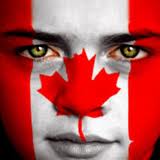Background
 On June 20, 1868, a proclamation signed by the Governor General, Lord Monck, called upon all Her Majesty’s loving subjects throughout Canada to join in the celebration of the anniversary of the formation of the union of the British North America provinces in a federation under the name of Canada on July 1st. The July 1 holiday was established by statute in 1879, under the name Dominion Day. There is no record of organized ceremonies after this first anniversary, except for the 50th anniversary of Confederation in 1917, at which time the new Centre Block of the Parliament Buildings, under construction, was dedicated as a memorial to the Fathers of Confederation and to the valour of Canadians fighting in the First World War in Europe. The next celebration was held in 1927 to mark the Diamond Jubilee of Confederation. It was highlighted by the laying of the cornerstone by the Governor General of the Confederation Building on Wellington Street and the inauguration of the Carillon in the Peace Tower. Since 1958, the government has arranged for an annual observance of Canada’s national day with the Secretary of State of Canada in charge of the coordination. The format provided for a Trooping the Colours ceremony on the lawn of Parliament Hill in the afternoon, a sunset ceremony in the evening followed by a mass band concert and fireworks display.
On June 20, 1868, a proclamation signed by the Governor General, Lord Monck, called upon all Her Majesty’s loving subjects throughout Canada to join in the celebration of the anniversary of the formation of the union of the British North America provinces in a federation under the name of Canada on July 1st. The July 1 holiday was established by statute in 1879, under the name Dominion Day. There is no record of organized ceremonies after this first anniversary, except for the 50th anniversary of Confederation in 1917, at which time the new Centre Block of the Parliament Buildings, under construction, was dedicated as a memorial to the Fathers of Confederation and to the valour of Canadians fighting in the First World War in Europe. The next celebration was held in 1927 to mark the Diamond Jubilee of Confederation. It was highlighted by the laying of the cornerstone by the Governor General of the Confederation Building on Wellington Street and the inauguration of the Carillon in the Peace Tower. Since 1958, the government has arranged for an annual observance of Canada’s national day with the Secretary of State of Canada in charge of the coordination. The format provided for a Trooping the Colours ceremony on the lawn of Parliament Hill in the afternoon, a sunset ceremony in the evening followed by a mass band concert and fireworks display.
